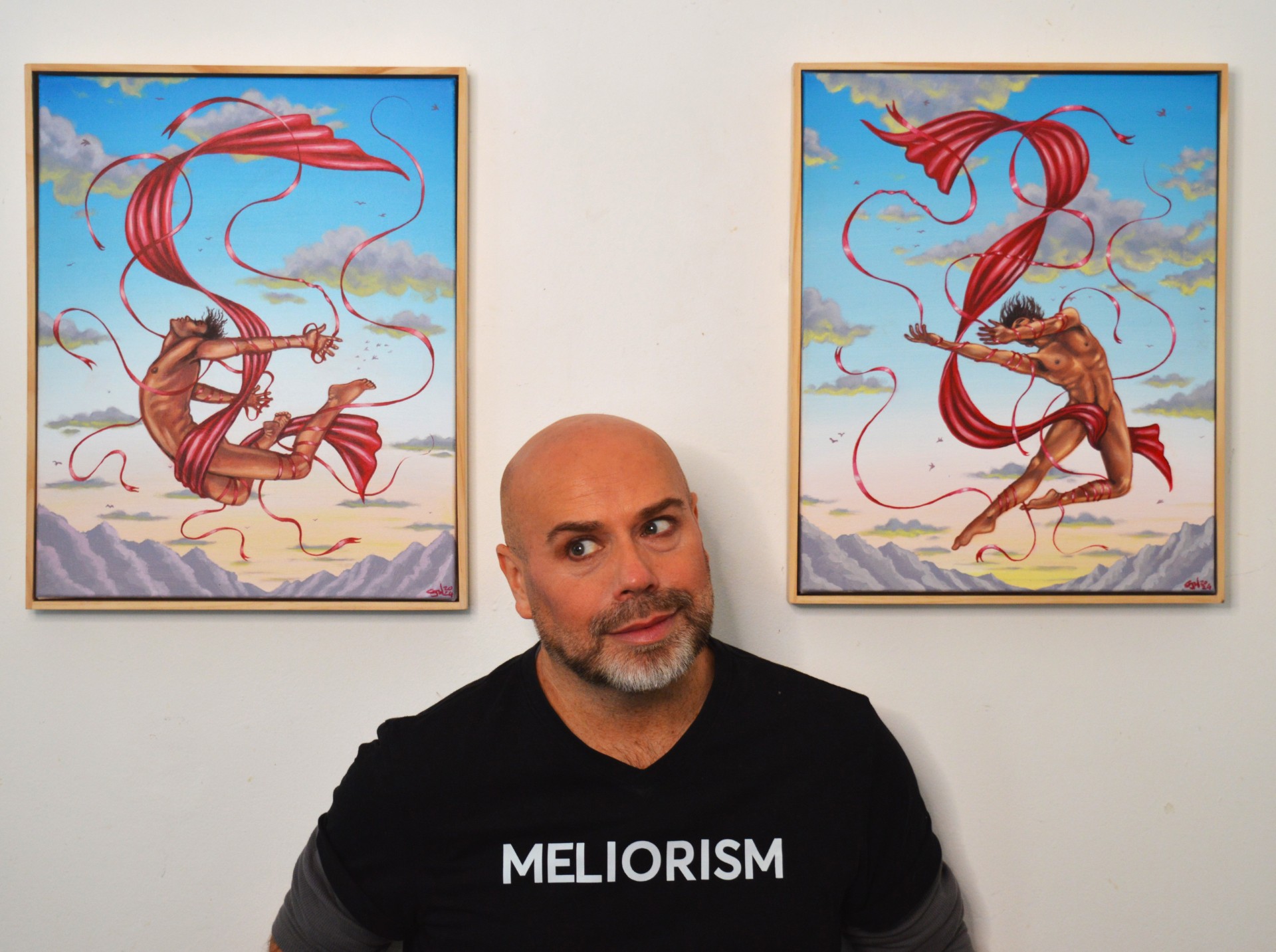
Guy James Whitworth: meliorating trauma through art

“Meliorism is from the Latin ‘melior’ which is ‘to make something better’”, says Guy James Whitworth, explaining the title of his upcoming exhibition. Meliorism is the prominent Sydney queer artist’s 8th solo show and will also mark 25 years since his very first Sydney exhibition.
Whitworth is well known and highly regarded in the LGBTQI+ community and in broader circles, both for his unique artworks and his witty writings. His portraiture features many well-known Australian identities and hangs in galleries and on corporate walls. He has successfully published two books with a third on the way.

Whitworth’s previous exhibitions have each been based around a particular theme; this new one is especially significant to him.
“This exhibition is a very delayed emotional response to my coming of age in the late ‘80s and early ‘90s, and the impact that HIV & AIDS was having around me at that time,” says Whitworth.
“I think with all trauma and all sort of grieving processes, they’re often delayed. The bigger the trauma, the more often the delay. And I feel like for someone who was in their teens and early twenties — very formative years — in the late ‘80s early ‘90s, seeing everything that I saw and seeing the young men that I loved, that I fell in love with, that I was having relationships with, succumb to this disease and also die at the hands of this disease, it was actually something that I couldn’t deal with for a very long time, and it’s something that I will deal with for the rest of my life. I think a lot of people of my age group will.”

It’s now roughly three decades since Whitworth began experiencing the surreal horror of a seemingly unstoppable virus that indiscriminately devastated the LGBTQI+ community, and it’s only now that he feels capable and confident enough to tell those stories in his art.
With the world in a negative spiral, it also feels like the right time for a bit of meliorism; a bit of escapism, change, a sense of hope.
“Now is the time for queer artists to really shake things up and actually really improve how life can be through culture and art, and give people escapism and give people a way to sort of process trauma,” says Whitworth. “I think queer artists really are expert in the field of processing trauma a lot better than straight people, because I feel like queer people are a lot more resourceful and a lot more creative in those areas.”

“As queer individuals and as queer artists we get to shirk off the expectations of society and, as queer artists we get a lot more freedom. Queer privilege is actually a real thing, and queer privilege means that we get to stand outside of the standards of what art and culture expects from artists and creators, and we get to make the art and create the culture that we as queer people deserve…we get to decide what we create.”
Whitworth’s artwork is distinctive. He describes it as stylised but also photo-realistic figurative work. The works in Meliorism feature recurring elements such as clouds and ribbons/drapery, and a lot of different skin tones.

“This is possibly the most nudity I’ve ever had in an exhibition. The bum and the nipple count in this exhibition is massive,” says Whitworth.
The ribbons and drapery are in symbolic colours, some taken from the progress flag, some from the trans flag, some from the rainbow flag, in each case reflecting the subject matter in the painting. There are of course, red ribbons which, Whitworth says, not only reference the symbol of HIV/AIDS awareness but also the blood of human kind.
Whitworth’s art is highly sought after and collectable, yet they are priced so that they cater to a broad budget range.









